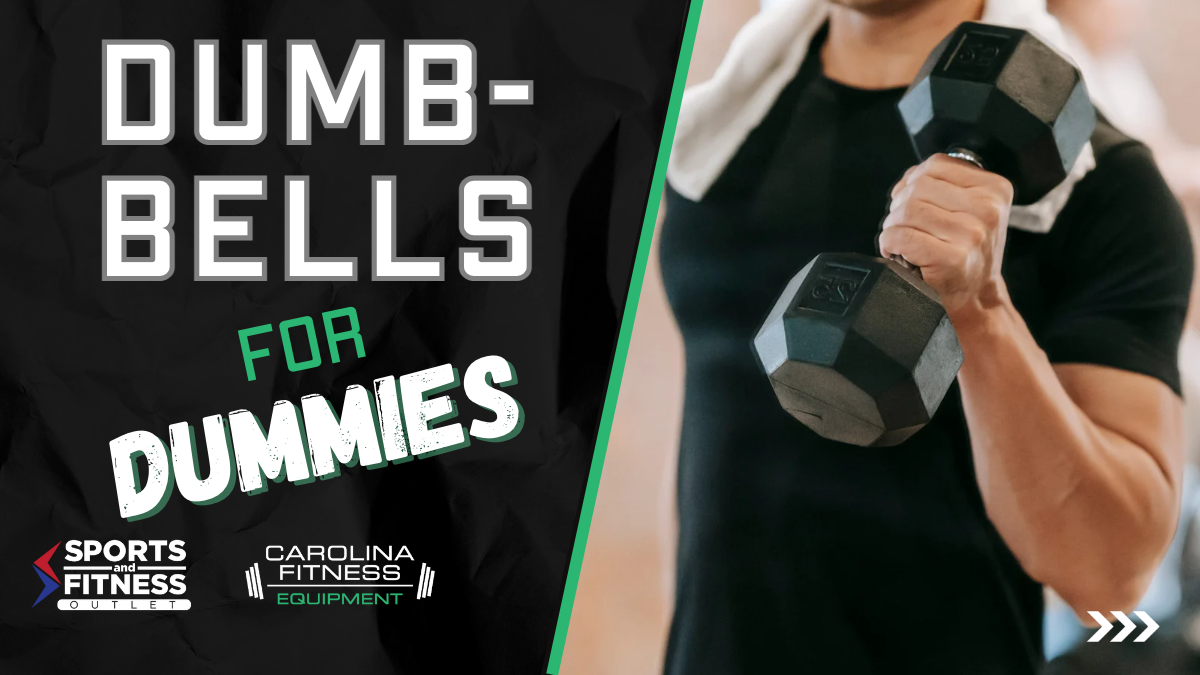How to Get Started Using Dumbbells

Exercising with dumbbells is an excellent, convenient way to get into shape. Even though they're straightforward and require no additional equipment, they've stood the test of time of being highly effective in helping you build strength and improve your overall fitness. This week's blog will explore the benefits of taking up dumbbell exercises into your routine, as well as provide step-by-step instructions on how to perform a few beginner-friendly exercises with dumbbells. We'll also go over tips on proper form and safety measures to ensure the best results from your workouts. So, whether you’re a beginner looking for the best way to approach dumbbells, or you're an experienced athlete that wants some extra assistance, this guide has something for everyone!
Benefits of Using Dumbbells
Using dumbbells for exercise can provide numerous benefits to both beginner and experienced athletes -- They're simple, accessible tools that require no extra equipment or setup, making them extremely user-friendly. They also act as a tool you can wield to target specific muscle groups with greater precision than other forms of exercise, allowing you to focus on areas that need the most attention. In addition, consistent dumbbell use proves to be highly effective in helping build strength and improve overall fitness levels while being relatively low impact on your joints and muscles. Who wouldn't want to get started using dumbbell exercises right away? Let's get into some exercises...
Three Dumbbell Exercises to Try
Dumbbell Goblet Squat
To perform the exercise, picture the dumbbell as your goblet. Start by standing with your feet slightly wider than shoulder-width apart and holding a dumbbell in one or both hands at chest height. Keep your back straight and core engaged as you lower yourself into a squat, making sure to keep the dumbbell close to your chest. Once you’ve reached the bottom of the squat, pause briefly before pushing back up and returning to the starting position. Repeat this motion for 12-15 repetitions per set.
Dumbbell Bent-over Row
To perform a dumbbell bent-over row, begin by standing with your feet hip-width apart and a dumbbell in each hand. Bend at the hips and lower your torso until it is almost parallel to the floor. With your palms facing inward, raise the dumbbells toward your chest by bending your elbows, keeping them close to your sides. Pause briefly at the top and then lower back down to the starting position before repeating for 12-15 repetitions per set.
Dumbbell Overhead Press
The dumbbell overhead press is a great exercise for targeting the shoulders and upper back muscles. To perform this exercise, start with your feet hip-width apart, chest up, eyes forward, and core engaged. Hold a pair of dumbbells with palms facing forward and elbows at 90 degrees. Take a deep breath in, then press the dumbbells upward until your arms are fully extended. Pause for a moment and then lower the weights back down to the starting position before repeating for 12-15 repetitions per set.
Tips on Proper Form & Safety Measures
As with any piece of fitness equipment, it's important to practice proper form and safety measures when you workout with dumbbells. Not only will this reduce the risk of injury, but it'll help you maximize the effectiveness of each exercise as well. In addition, following correct safety protocol can help prevent unnecessary strain on your joints and muscles that can become harmful in the future. You wouldn't want to ruin all your progress toward your fitness goals because of an injury that could've been mitigated! So, here are some tips on how to maintain proper form and stay safe when using dumbbells for exercise:
• Always keep your back and neck straight, core engaged, and eyes forward during exercises.
• Start with lighter weights and gradually increase the weight as you become stronger.
• Use slow, controlled movements to avoid jerking motions.
• Avoid locking your elbows and shoulders in order to prevent potential joint strain.
• Make sure to stop if there is any pain or discomfort.
• Take breaks in between sets to allow your muscles to rest and recover.
In conclusion, dumbbell exercises are a great way for beginners to get into shape and build strength. Not only do they require no special equipment or expertise, but they can also be used to target specific muscle groups with greater precision than other forms of exercise. With these step-by-step instructions on how to perform various exercises with dumbbells and tips on proper form and safety measures, you’ll be able to maximize the effectiveness of your workouts while avoiding any potential injuries. So what are you waiting for? Get started today by adding some simple yet effective dumbbell exercises into your fitness routine!


